Etruscan Beautiful Bronze Lamp of Cortona – Studied
Conny Waters - AncientPages.com - Archaeologists have recently focused their study on a beautiful artifact dated to the ancient Etruscan civilization that inhabited Etruria in ancient Italy.
Underside of the bronze lamp of Cortona. Museo dell’Accademia Etrusca e della Città di Cortona (MAEC henceforth), Cortona. Published with the permission of MAEC. (Photo: MAEC webpage, edited by R. Alburz)
This artifact is a large, intricately designed bronze hanging lamp that might have been part of rituals paying homage to the Greek god Dionysus, but it took long time to come up with this conclusion.
The researchers wrote in their paper that the Cortona lamp has a “diameter of 60 cm and weighs 57.72 kg. It was found on 14 September 1840 in an isolated ditch, approximately 2.8 km to the west of Cortona at località La Fratta in central Etruria on land owned by the Cortonese noblewoman Luisa Bartolozzi Tommasi.
The lamp was recovered together with a damaged and inscribed bronze plaque.
For nearly two centuries, many researchers have worked tirelessly to unravel the intricate symbolism of this Etruscan artifact.
For many years it was believed that these figures symbolized the Greek river god Acheloos, usually considered the father of the famous sirens.
The Etruscan lamp of Cortona. Credit: Museo dell'Accademia Etrusca e della città di Cortona
After a comprehensive analysis of literary materials and visual proofs, the researchers concluded that the lamp's decorations probably represent the "thiasos" – a group of devotees associated with Dionysus, the god of wine and festivity.
After thoroughly analyzing literary materials and visual proofs, the team - Ronak Alburz, Ph.D. student and Associate Professor Gijs Willem Tol of the University of Melbourne, Australia, concluded that the lamp's adornments probably represent the "thiasos" – a group of devotees (often dancers, singers) and other followers associated with Dionysus.
The Cortona lamp also contains cosmic symbolism, which has been observed but not fully understood by earlier researchers.
Dionysos and his thiasus. Upper tier of an Attic black-figure krater-psykter. Credit line: 1998 purchaded. Musée du Louvre - Public Domain
Therefore, the recent analysis of the artifact represents a visible depiction of the mysteries' cosmos. The lamp dated to the Late Archaic period (ca. 480 BCE) is a representation of the mysterious cosmos, featuring Dionysus, the sun god, in each of the sixteen segments of the Etruscan sky. It symbolizes the god’s journey through the alternate universe's outermost region.
The Cortona lamp was likely linked to the secretive Dionysus cult. The lamp's design portrays a Dionysian thiasus, possibly participating in a ritualistic act within the mystical universe in honor of Dionysus, according Alburz, the lead author of the study.
Paper: “A Re-Evaluation of the Iconography of the Etruscan Bronze Lamp of Cortona” Etruscan and Italic Studies, 2024. doi.org/10.1515/etst-2023-0019
Written by Conny Waters - AncientPages.com Staff Writer
More From Ancient Pages
-
 Bones Of Giants Unearthed In Ancient Cave
Ancient Mysteries | Sep 23, 2018
Bones Of Giants Unearthed In Ancient Cave
Ancient Mysteries | Sep 23, 2018 -
 Human Ancestors Preferred Mosaic Landscapes And High Ecosystem Diversity – New Study
Evolution | May 13, 2023
Human Ancestors Preferred Mosaic Landscapes And High Ecosystem Diversity – New Study
Evolution | May 13, 2023 -
 Incredible Sedlec Ossuary – Church Of Bones Reveals More Gruesome Secrets
Archaeology | Dec 4, 2019
Incredible Sedlec Ossuary – Church Of Bones Reveals More Gruesome Secrets
Archaeology | Dec 4, 2019 -
 Nefertum – God Of Lotus Blossom, Perfumes, Aromatherapy, Beauty In Egyptian Mythology
Featured Stories | Apr 17, 2021
Nefertum – God Of Lotus Blossom, Perfumes, Aromatherapy, Beauty In Egyptian Mythology
Featured Stories | Apr 17, 2021 -
 Unusual Medieval Knife Used Like An Eraser Discovered In Poland
Archaeology | Feb 16, 2018
Unusual Medieval Knife Used Like An Eraser Discovered In Poland
Archaeology | Feb 16, 2018 -
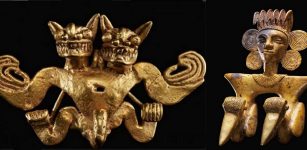 Mysterious Sophisticated Gran Coclé Culture Reveals Its Ancient Secrets
Civilizations | Mar 9, 2020
Mysterious Sophisticated Gran Coclé Culture Reveals Its Ancient Secrets
Civilizations | Mar 9, 2020 -
 Unexpected Discovery Of Europe’s Oldest Vanilla Pod In Prague Castle – Was It Used For Alchemical Experiments?
Archaeology | Apr 8, 2025
Unexpected Discovery Of Europe’s Oldest Vanilla Pod In Prague Castle – Was It Used For Alchemical Experiments?
Archaeology | Apr 8, 2025 -
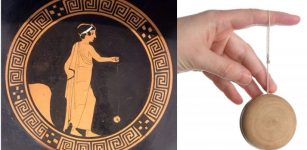 Oldest Yo-Yo Dates Back To 400-500 B.C
Ancient History Facts | May 13, 2019
Oldest Yo-Yo Dates Back To 400-500 B.C
Ancient History Facts | May 13, 2019 -
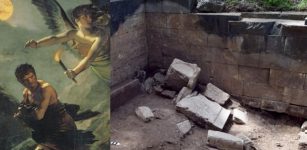 Temple Dedicated To Goddess Nemesis Discovered Under Ancient Theater In Greece
Archaeology | May 20, 2019
Temple Dedicated To Goddess Nemesis Discovered Under Ancient Theater In Greece
Archaeology | May 20, 2019 -
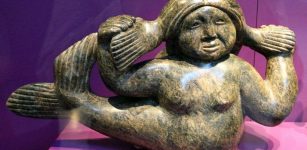 Sedna: Inuit Goddess Sacrificed By Selfish Father Fearing For His Own Life
Featured Stories | Jan 7, 2020
Sedna: Inuit Goddess Sacrificed By Selfish Father Fearing For His Own Life
Featured Stories | Jan 7, 2020 -
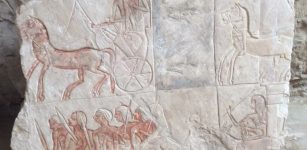 Unusual Scenes Painted On The Walls Inside Egyptian Tomb Of General Iwrkhy – Discovered
Archaeology | May 10, 2018
Unusual Scenes Painted On The Walls Inside Egyptian Tomb Of General Iwrkhy – Discovered
Archaeology | May 10, 2018 -
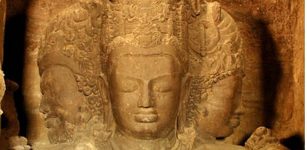 Ancient Complex Of Elephanta Caves In India
Featured Stories | Dec 27, 2016
Ancient Complex Of Elephanta Caves In India
Featured Stories | Dec 27, 2016 -
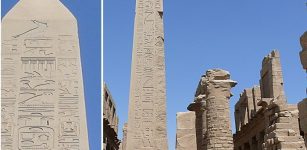 Unknown History Of Gigantic Obelisks Created With Ancient Lost Technology
Ancient Mysteries | Oct 8, 2017
Unknown History Of Gigantic Obelisks Created With Ancient Lost Technology
Ancient Mysteries | Oct 8, 2017 -
 The Hittites, Mysterious People Of A Thousand Gods – Collapse Of The Hittite Empire
News | Sep 9, 2015
The Hittites, Mysterious People Of A Thousand Gods – Collapse Of The Hittite Empire
News | Sep 9, 2015 -
 Ancient Burials Of World’s First Horse Riders Found Near The Black Sea
Archaeology | Mar 3, 2023
Ancient Burials Of World’s First Horse Riders Found Near The Black Sea
Archaeology | Mar 3, 2023 -
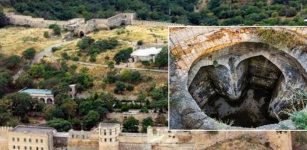 Subterranean Structure In Medieval Naryn-Kala Citadel: Was It The Christian Temple?
Archaeology | Jul 12, 2019
Subterranean Structure In Medieval Naryn-Kala Citadel: Was It The Christian Temple?
Archaeology | Jul 12, 2019 -
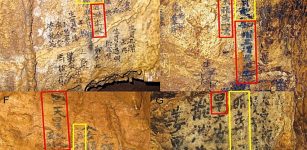 ‘Graffiti’ Found On The Walls Of Dayu Cave, China
News | Aug 25, 2015
‘Graffiti’ Found On The Walls Of Dayu Cave, China
News | Aug 25, 2015 -
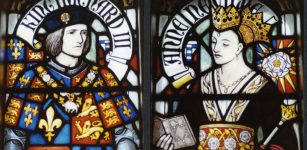 On This Day In History: Mysterious Death Of White Queen Anne Neville – On Mar 16, 1485
News | Mar 16, 2017
On This Day In History: Mysterious Death Of White Queen Anne Neville – On Mar 16, 1485
News | Mar 16, 2017 -
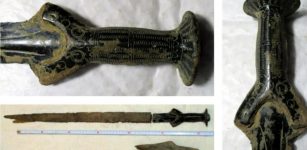 Rare 3,300-Year-Old Sword Accidentally Discovered In Jesenicko, Czech Republic
Archaeology | Nov 9, 2020
Rare 3,300-Year-Old Sword Accidentally Discovered In Jesenicko, Czech Republic
Archaeology | Nov 9, 2020 -
 Odeuropa – Unusual Project Will Recreate The Smells Of Old Europe And Store The Scents In A Library
News | Nov 17, 2020
Odeuropa – Unusual Project Will Recreate The Smells Of Old Europe And Store The Scents In A Library
News | Nov 17, 2020



